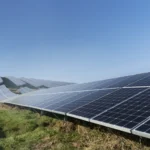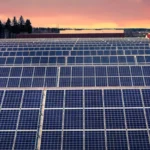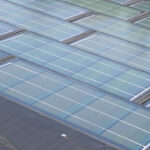Solar String Sizing Check: Did Your Installer Get It Right?
Solar String Sizing Check: Did Your Installer Get It Right?
A Solar PV Rooftop system will give its optimum performance only when the string sizing has been done correctly. In this blog, we will be talking on correct methods of string sizing.
Now let us first understand what a String is. When we connect Solar PV panels, used in solar power plant for generating solar energy for home/industrial/commercial roof top or ground mounted, in series, then it is called a String. String sizing means, what should be the minimum and maximum number of Solar PV panels to be connected in a string, so that system operates at its highest efficiency.
Output parameters of Solar PV panel , used in solar power plant for generating solar energy for home/industrial/commercial roof top or ground mounted ,should match the input parameters of the Inverter, so that the system works at its highest efficiency. If the parameters do not match, or falls out of the range, the system will shut down or will work with very less efficiency. Hence, String sizing must be done correctly.
Parameters of Solar PV vary with change in temperature. With increase in temperature the voltage of Solar PV panel decreases and this need to be consider while sizing the string. One needs to check the Technical Data Sheet of Solar PV panel (as given by manufacturer) for calculating the effect of temperature on a particular Solar PV Panel and then match that with the Inverter input parameters. Until and unless this is done, we can’t say that the system is designed perfectly and will perform best.
For example, if the strings are not sized considering the temperature factor and inverter input parameters, then there may be situations when the Solar PV Panel parameters will not match the inverter input parameters and the system will shut down or will under perform.
Our string sizing goals should be ::That we make sure never to supply the inverter excess voltage which may kill it—Max string length. Voc adjusted for temp will decide Max string length.
And also to ensure that we always supply enough voltage to inverter to turn it on—minimum string length. Vmp adjusted for temp will decide Min string length.
So you need to ask your installer, did he consider these parameters while string sizing ? Has he actually done string sizing or made a string by just counting the even numbers of PV panels in series?
Keep visiting our website for more such blogs.
Suggested Articles

The Rise of Clean Energy: Solar Energy Trends in 2023
The solar energy industry is on the rise, as the demand for clean and renewable energy sources continues to increase. 2023 is shaping up to be a big year for the solar energy sector, as new technologies and innovations are expected to drive growth and expand the reach of solar energy.

Eco-Friendly Solar Panels: The Future of Sustainable Power
Eco-friendly solar panels are revolutionizing the way we generate clean energy. This blog explores their benefits, sustainable materials, and role in reducing carbon footprint while providing efficient energy solutions for residential, industrial, and commercial use. Learn why investing in eco-friendly solar technology is the future of sustainable power.

How to Clean and Maintain Solar Power System for Maximum Efficiency
Regular cleaning of your solar power system is essential to maintain maximum efficiency and energy output. Dust, bird droppings, and pollution can reduce performance by up to 20%. This blog explains the right cleaning methods, schedules, and safety tips for residential, industrial, and commercial solar systems.

Are Colleges and Schools ready to take up Solar challenge?
Adopting solar energy can help schools and colleges reduce electricity costs and promote sustainability. This guide explores how educational institutions can implement rooftop solar projects, the benefits, and what steps are needed to take on the solar challenge effectively.

Delhi Government Pledges to Boost Renewable Energy Generation
Delhi, the capital city of India, is moving towards a greener future with an ambitious plan to generate an additional 6,000 MW of electricity using renewable energy sources.

Solar Inverters India: How to Choose the Best for Your Solar System
India’s solar market offers a wide range of inverters, making selection challenging. This guide explains key factors to consider, helping users choose the right inverter for residential, commercial, and industrial solar projects effectively.

Delhi Jal Board Solar Project: A Step Towards Sustainable Energy
Delhi Jal Board has embraced solar power, becoming a leader in renewable energy adoption. This initiative highlights the benefits of solar energy, including cost savings, sustainability, and promoting clean energy practices in institutional operations.

Should You Replace Solar Panels with Solar Shingles?
Discover how solar batteries store excess energy, maximize your solar system’s efficiency, and provide reliable power during outages. Learn about the types, benefits, lifespan, and maintenance tips to make the most of your solar investment.